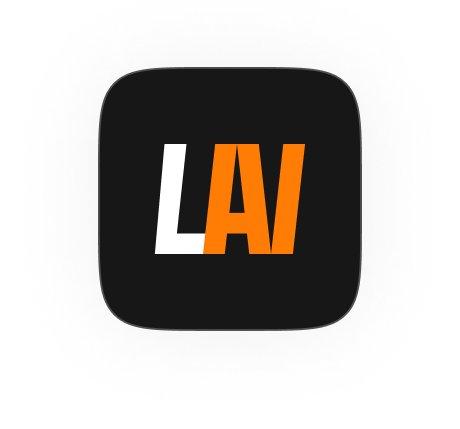The Complete Guide to After Call Work: Definition & Top Tips to Reduce it


The metric of After Call Work (ACW) refers to activities done by a customer support agent after a call to close out with one customer before engaging a new customer. After Call Work (ACW) is also known as “Post Call Wrap-Up” and includes call logging call summaries, escalating new issues, updating other departments on follow-up actions, and updating call/customer information on CRM software.
Are you interested in learning about After Call Work or Post Call Wrap-Up? This exciting 7-minute article contains a complete guide to after call work, what it means, related metrics, and how to reduce it.
Note: This article will use After Call Work and Post Call Wrap-Up interchangeably. Don’t be confused; they mean the same thing.
Enjoy your reading!
Introduction: A Hero’s Tale
Meet Luke!
Luke is a blended call center agent who loves his job. Each day, an Automatic Call Distribution (ACD) System assigns him an unending queue of customers with varying issues. And Luke challenges himself to leave each customer feeling heard, understood, and satisfied.
Luke is hard at work every day, being a hero, resolving customer issues, answering inquiries, documenting all interactions, recommending & selling new products, and sometimes, just listening with empathy to quell the agitations of angry customers.
But despite his hard work, his Average Handling Time (AHT) is high. The absence of an AI system and lack of streamlined quality processes leave Luke feeling constantly overworked.
The quality of his call summaries is scant and lacks sufficient information. Other times, it is the mental exhaustion of recalling product information for an unending number of inquiring customers.
Luke spends about 40% of his time on after-call work (ACW). To help Luke and all the other stellar call center agents at your call center, we have to find the best ways to reduce post-call wrap-up time and give your call center the substantial competitive advantage it needs in the industry.
But first;
What is Post Call Wrap Up
Post-Call Wrap-Up is a call center agent’s activities after ending a call with a customer. The attending agent’s status remains busy or unavailable until the wrap-up is complete.
Post Call Wrap-Up time is the time taken from when the customer hangs up the call to when the agent becomes available for the next call.
Activities performed during ACW vary depending on the purpose of the call, but it typically involves the following task:
- Escalating product/service-related issues reported by customers (e.g., bugs in software, product manufacturing defects.)
- Communicating customer concerns, requests & issues to necessary teams for follow-up action.
- Triggering email notifications in response to customer requests.
- Updating Customer information and call outcomes on CRM knowledge base.
- Dispositioning calls: i.e., tagging of calls based on the context, outcome, or progress levels.
- Writing up a summary of the call, and entering those notes into the CRM or other system of record.
How Much Time Should You Allocate to Post-Call Wrap-Up?
There is no specific duration for how long after-call work should last because agents have different capacities and expertise, and each call has a different purpose.
However, the World Bank Group posits that 6 minutes is ideal for the post-call wrap-up. But depending on your call center industry, there may be more efficient options.
Generally, factors that influence after-call work duration include:
- Purpose of Call: Customer inquiries about products have shorter wrap-up time because they only require logging of the call purpose. In contrast, customer complaints about faulty products and delayed services may require a longer time to address as they may require follow-up actions.
- Agent Experience/Training: A state of the call center report showed that experienced agents wrapped up calls 20% faster than novices. Measuring post-call wrap-up reveals gaps in agents’ knowledge and skill that require training to improve.
- Agent Behaviour: Agents may intentionally extend wrap-up time to avoid attending to another customer. This example is more prevalent in inbound call center agents who handle non-transactional customer complaints. Some agents are just slower than others in processing customer queries.
- Contact Center Business Processes: Contact centers whose processes are not streamlined for efficiency may have agents performing ACW activities that don’t impact KPIs and ROI significantly. High ACW could result from a lack of standard quality management in your call center’s standard operating procedures.
- Use of AI: Expert AI systems with Natural Language Understanding (NLU) capabilities like Level AI automate ACW by automatically generating call summaries and auto-tagging conversations for call dispositioning, allowing agents more time to focus on the next call.
Explore more ways level AI reduces post-call wrap-up time for your call center.
Why it is important to reduce your ACW
It is vital to reduce your ACW because high ACW impacts virtually every other related metric in a call center negatively.
To understand the impact, Let us look at Luke’s organization and how it operates.
Luke works for a call center called Support Inc., which offers customer support outsourcing services to companies with too many support requests to manage.
Support Inc. pays Luke $10 for each call. And we said Luke spends 40% of his average handling time (AHT) on after-call work. For every call ($10), the company pays $4 on ACW.
If Luke’s ACW were to reduce to 10% of the average Handling Time, the company would save $3 per call. That may not mean much to you until we tell you that research shows that call centers make up 52,000 calls per annum. A reduction in ACW could potentially reduce your cost per call by $150,000 annually. This example is just one benefit.
Other impacts of low ACW include:
- Frees up time to attend to more customers, reducing Average Time in Queue and increasing your customer satisfaction score over time.
- Decreases the Average Call Abandonment Rate because customers wait for less time for agents to attend to them.
- It decreases your Average Handling Time (AHT), improving overall customer experience.
- Agents’ Service Level increases as the percentage of calls answered within a predefined amount of time increase for that agent.
- High ACW usually exposes operational issues like what ACW tasks take the most time and how to manage them better.
- And very importantly, call center ROI increases if other factors are in place.
How to Reduce Post-Call Wrap-Up
Now that you know just how important ACW is, reducing it has to be a priority to help the upbeat, ever-so-diligent Lukes in your call centers.
And we’ve come through for you again; here are 4 neat tricks to reduce your post-call wrap-up time:
1. Define Clear Standard Operating Procedures (SOPs)
Call center quality assurance should define clear SOPs that save agents time deliberating the next course of action.
SOPs keep the company’s quality standards fresh in agents’ memories, maintain service consistency, and reduce call average handling time.
Level AI’s ‘agent assist’ module enables you to program ‘next best action’ on conversation queues that the AI is trained to pick up making it easy for any agent regardless of tenure to stick to your SOPs.
2. Perform Some ACW Activities During the Call
For call centers with limited automation capabilities, the only hack at their disposal to reducing wrap-up time is to perform some of the straightforward follow-up tasks during the call.
It goes without saying that agents should only do what they can during the call without compromising the quality of their customer service.
Be careful not to ask customers to wait while you perform these tasks, as that will increase Total Hold Time (THT) and reduce customer satisfaction.
Now what if artificial intelligence was auto-generating these post-call summaries and logging them directly into your CRM. Wouldn’t it be great? Well that’s one of the most popular Level AI features.
3. Training
High ACW can be a strong indicator that customer service agents require training. A way to reduce your ACW time is to coach agents in the activities on which agents spend the most time during post-call wrap-up, e.g., proper note-taking and call dispositioning.
4. Call Scripting
In addition to SOPs that save time on ACW, call center managers should also adopt call scripting to simulate a standard call process from the beginning to the end.
This guide will boost agents’ confidence and lessen mistakes. Scripts should be updated regularly with every peculiar occurrence during calls.
These 4 steps to reducing ACW are helpful and constitute what you would need to do in the absence of an expert AI system like Level AI, but with
LEVEL AI, each tip is automated, and all the work is done for you so that your agents can continue to smash those KPIs.
Meet LEVEL AI: The Perfect NLU Assistant for Your Luke!
The most crucial tip to reduce after-call work is to automate the activities with an Artificial Intelligence system that will take the edge off your call center agents.
Level AI provides your call center agents with a robust collection of distinct features tailored to help agents to reduce after-call work and improve customer satisfaction. Features such as:
- Auto summary: Level AI uses Natural Language Processing (NLP) to process all call conversations between agents and customers. It then uses its Natural Language Generation (NLG) engine to summarize calls automatically. This summary saves hours for agents per day in manual call summarizations.
- Auto-tagging: The AI automatically tags calls with its speech analytics capabilities, eliminating the need for manual call dispositioning.
- Personalized Agent Training: Level AI uses Natural Language Processing to quickly identify coachable conversations from agents’ calls and create rich, customized training sessions for the agents based on areas they need to improve.
- Live Agent-Assist: No more overwhelming customer inquiries. Level AI assists the agent’s conversation with the customer by providing the right knowledge article and real-time hints for agents to answer perfectly and quickly wrap up calls.
- Track agent performance improvement: Perhaps the most crucial feature. You can track agents’ performance to identify areas taking the most ACW time and improve with personalized training.
Level AI gives you clear visibility into critical metrics like ACW so you can take action and improve your customer satisfaction.
With an AI assistant like Level AI, agents can focus 100% on customers. From customers to call center managers, everybody wins!
Get a free demo today; your Lukes will thank you for it!
Keep reading
View all





